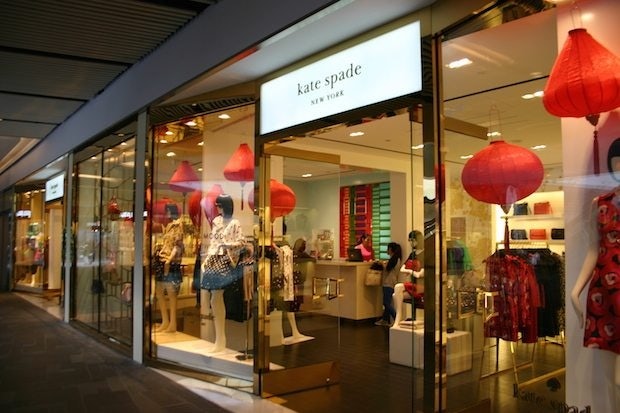
The Kate Spade store in Beijing's Sanlitun shopping area. (Jing Daily)
This article was published earlier in our weekly newsletter. To gain early access to future posts, sign up through our “Newsletter Sign Up” box on the right.
Move over, billionaires—there’s a new big spender capturing the attention of high-end brands: the “moderately wealthy” Chinese consumer.
According to a recent study sponsored by Citi, by 2020 China will boast more households with between US$100,000 and US$2 million than the United States. Dubbed the “new wealth builders” (NWB), Citi states that this is the fastest growing wealthy income group in the world. While NWBs in China hold second place for now, with a total of US$19.5 trillion in assets, within just five years they will overtake the United States for the top spot with assets reaching US$53 trillion. (Although this figure likely won’t stop there).
As China’s anti-corruption campaign has encouraged many wealthy mainland Chinese to scale back on ultra-extravagant spending, the NWB consumer group will be a main target for high-end brands to ensure long-term global growth. As a result, labels should take a look at some of their key characteristics to know how to give them what they want.
According to the report, this is a pragmatic, self-made group that sees itself as more middle-class than wealthy. As a result, they may not readily accept the bling-heavy attitude of the wealthier nouveau riche and will respond more to assurances of quality craftsmanship and service. Citi also claims this group is likely to be more charitable and social-conscious-driven than China’s earlier wealthy generation, making corporate social responsibility (CSR) crucial.
Since this group is likely to be more price-conscious than the ultra-rich, yet still wealthy enough to travel abroad, expect them to skip high prices in China and opt to pick up goods while on trips to Japan, South Korea, Europe, or North America.
A wide range of brands are most likely to benefit from this group. Although brands targeting the superrich (like yacht makers) won’t see much benefit, the millionaires will opt for the higher end of the luxury spectrum while upper-middle-class consumers will boost accessible luxury brands like Kate Spade (while of course sometimes splurging on luxury items for gifts).